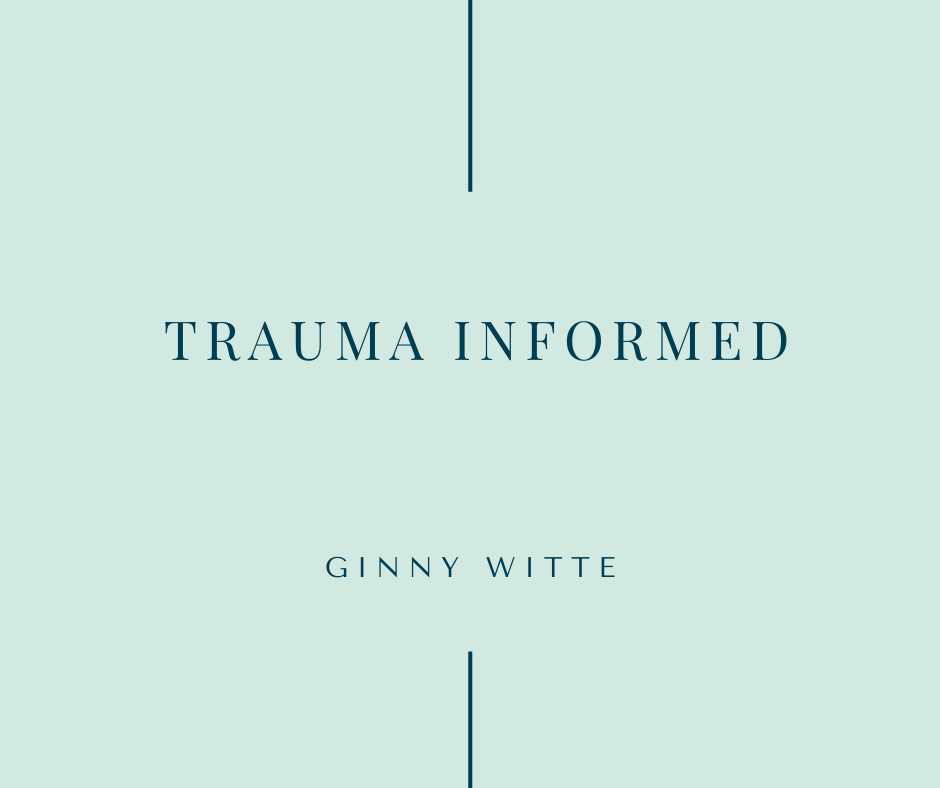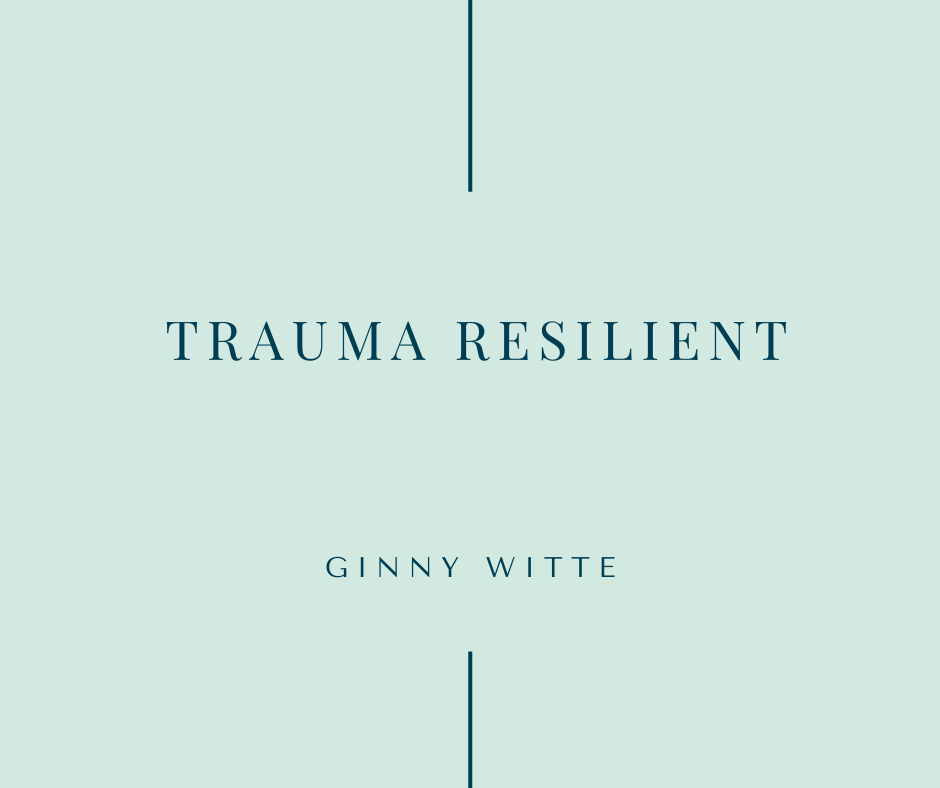
Ginny Witte, PhD
What is Trauma Informed ?
Becoming Trauma Informed
What is Trauma Informed?
Each one of us is a result of our genetic background and the experiences we have lived. As adults, we must begin to look at each child through the lens of the life they have lived and the experiences that have shaped who they are. The lives your students have lived has shaped not only who they are, but also their behavior. Therefore, we can begin to look at the student’s behavior as information that can help us understand and engage with our students.
A child’s experiences also shapes their perspective of the world and how they function in the world. When children have experiences with caregivers who have been kind and supportive, the child’s perspective of the world is one where adults are viewed and felt as kind and caring. When a child’s experiences in life are experiences where adults cannot be trusted, or where the child has been hurt by adults, their world becomes one that is not safe.
If our students’ needs have been met, if they have felt loved, supported and guided, they stand on strong ground and are better able to navigate the world of learning. Students generally come to school with excitement, curiosity, and engagement. If students have lived a life of stress, trauma, and abuse their nervous systems have been shaped for protection. They have learned the world is not a safe, or wonderful place. They have learned to look out for danger. Students further have learned to fight because no one was there to protect them and they had to protect themselves. They may have learned to shut down because live was all too much for their nervous system to handle. These students are not ready to learn. As a result we must begin to look at each student individually, and to see their behavior as a lens as to what is going on inside them. This is where I can help. If you are interested in becoming trauma informed, learning more about trauma, or how to help those affected by trauma, please contact me below.

What is Trauma Informed
Being Trauma Informed means:
- understanding what trauma is and the effects it has on the nervous system.
- understanding that it is more helpful to look at each child’s behavior as a messenger of what the child needs, or has missed in their development.
This is where we begin. You will learn what trauma is, how to recognize trauma, and behavioral and environmental strategies to help individuals regulate themselves.
Participants will be able to:
- Define what trauma is
- Describe how trauma affects brain, body, and behavior
- Explain the impact of trauma on learning and relationships
- How to look at behavior problems through the lens of trauma
- Explain how the body responds to stress
- Explain what coregulation is
- Describe how the environment, including relationships can promote safety
- List 5 environmental strategies that can be used to promote safety
Trauma Ready
In this presentation we dive a little deeper and learn how relationships and safe environments promote safety and coreregulation.
Participants will:
- Evaluate their classroom as it relates to emotional safety and learning
- Practice and lead four breathing techniques used to promote calm
- Explain how routines, cues, and consistency promote safety
- Explain the importance of awareness in self regulation
- Describe the basics of the Social Engagement System in promoting safety
- Explain the importance of relationships in supporting safety
- Describe physical and emotional safety


Trauma Resilient
In this presentation participants will learn how to be stronger. You will learn strategies that you can implement in your school, church, or workplace that will build resilience in all individuals. Educational audiences will learn how to utilize physical education teachers, music teachers, art teachers, and support staff to support safe environments, build resilience in students, and create a place that supports healing.
In this session, you will:
- Define resilience
- Explain why resilience is important
- Discuss why some children develop reliance and others do not
- List four factors that support positive outcomes in adverse situations • Develop a list of fifteen strategies that you can use to build resilience in your life and in your students’ lives
- Describe how physical education, singing, art, and recess can help children develop resilience
- Evaluate your classroom setting and climate as it relates to supporting and building resilience in students
The Physiology of Trauma
What Happens to the Body During Trauma: The Physiology of Trauma
In this session, you will gain a deeper understanding of the physiology of trauma. Participants will:
- Describe the body’s three response states
- List the characteristics of each state
- Explain how the body responds in each state
- Explain the effects of chronic stress on the brain and behavior
- Explain the relationship between our physiology and learning
- Describe how teachers and adults can help children change their physiology and become more resilient to challenges in life
- Discuss five practices that will help students come back to a balanced learning state


Self Awareness and The Social Engagement
How Teachers and School Staff Can Help Students Regulate: The Importance of Self Awareness and The Social Engagement System
In this presentation participants will learn about the Importance of self-awareness and how educators can use the social engagement system to help students regulate.
Participants will:
- Describe the importance of self-awareness
- Learn how to use three self-awareness practices
- Describe the Social Engagement System (SES)
- Explain how the Social Engagement System promotes safety
- Explain how educators can use their Social Engagement System to help children regulate before and after a trigger
- Be given a brief understanding of the SES and Autism
- Explain how the classroom environment, school relationships, and the Social Engagement System of educators can affect students’ ability to regulate
